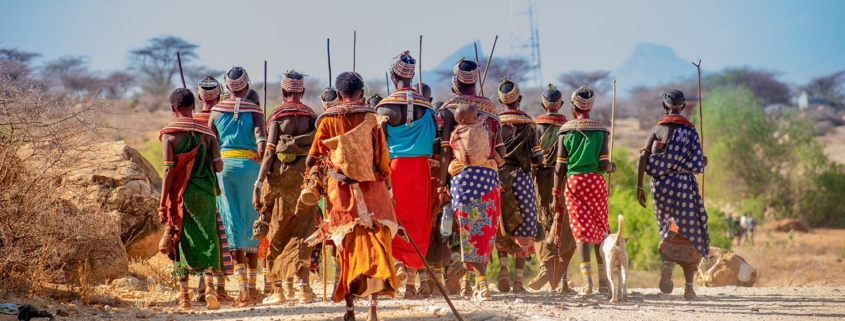Gender Inequality in the Context of Climate Change
COP 27 showed that although there is “increasing mention and integration of gender in nationally determined contributions over time,” climate change continues to reinforce gender inequality and disparities in socio-economic, health, and leadership initiatives. Various UNFCCC reports show how women and non-binary people from around the world, are made vulnerable by climate change, given the “interplay of gender norms and social norms.” Referred to as “solution multipliers,” women and gender minorities could be in a better position to effect solutions and influence climate mitigation and adaptation policies if they were included in “decision-making at all levels.”
Women living in households experiencing poverty are over represented in the world’s population and are more likely to experience climate hazards than people living in wealthy households. According to the World Bank, “nearly 2.4 billion women globally lack the same economic rights as men.” Indigenous women leaders state that climate change threatens the ties that connect Indigenous Peoples together (e.g., cultural identity, attitudes towards elders, and natural resources), and put pressure on community practices of hunting, as well as practices of gathering seeds and plants.
Gender-based health disparities are worsened by climate change. The Lancet reports that “there is an unacceptable scarcity of research on climate change health effects for non-binary people, who might also be particularly vulnerable as a result of compounding discrimination.” In turn, research data must be disaggregated for gender in order to facilitate “gender-sensitive assessments, and gender-responsible interventions” that are critical for effective, gender-responsive policies on climate adaptation and mitigation. There is also a lack of disaggregated and longitudinal population health data addressing the experiences of First Nations, Inuit, and Métis people; this translates into a “lack of strength-based and community-driven health indicators.” Chapter 2 of the Health of Canadians in a Changing Climate Report (2022) also notes how First Nation, Inuit, and Métis men, women, boys, girls, and gender-diverse people experience health impacts differently, and that research does not adequately respect the unique cultures and needs of these communities.
Increasing funding to gender-based Indigenous climate change initiatives is needed. For example, the Food and Agriculture Organization of the United Nations (FAO) with the Government of Nepal have implemented climate finance to enhance collaboration with Indigenous Peoples; they intend to secure “collective tenure rights as well as the full participation of [I]ndigenous and tribal women and youth in decision making processes.” The Government of Canada funds Indigenous environmental leadership through several initiatives. It would be worthwhile for both Indigenous and non-Indigenous governments to work with Indigenous communities and ensure that gender-inclusive initiatives are incorporated in climate leadership initiatives.
Indigenous Peoples are responsible for stewarding the biodiversity of approximately one-third of the world’s ecosystems, but receive only 17% of climate funds intended for them, and Indigenous women receive only 5% of this funding. This lack of funding reinforces barriers that limit the participation and engagement of Indigenous women and gender minorities in climate action, thus reinforcing gender inequality in the context of climate change.
By Leela Viswanathan
(Image Credit: Ken Kahiri, Unsplash)




 Abigail Lynn
Abigail Lynn